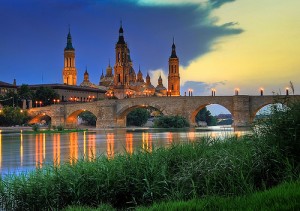The Benedictine Stift Gottweig Monastery stands on the eastern edge of the famous Danube valley area, the Wachau which is among Austria’s most famous wine regions. On the southern banks of the Danube, opposite to the town of Krems, the monastery is positioned 449 meters above sea level. Given its peculiar placement on the Göttweiger Berg mountain, it is also known as the “Austrian Montecassino”.
Established by Saint Altmann, the bishop of Passau in 1083, the Stift Gottweig Monastery was handed over to the Benedictines in 1094. Since then, forestry and wine-growing have substantially anchored the local economy with great emphasis on the development of the wine-growing industry.
The old cloister of the monastery was destroyed in 1718 following a great fire. After that, the construction of baroque buildings was executed according to the plans of architect Johann Lukas von Hildebrandt. The major attractions in the monastery are the museum in the imperial wing which is one of Austria’s most important museums; the imperial staircase under a marvelous ceiling fresco painted by Paul Troger in 1739; the monastery church with crypt and cloister and the imperial and princes’ rooms. All these attractions held in the Stift Gottweig Monastery rank high among Austria’s religious and artistic sites.
History of the Stift Gottweig Monastery
As stated earlier, the Stift Gottweig was founded by Saint Altmann, the bishop of Passau in 1083 as a monastery of canons regular and later handed over to the Benedictines in 1094. Prior Hartmann of St. Blaise’s Abbey in the Black Forest was elected abbot. Under his direction (1094–1114) the monastery transformed into a prestigious seat of learning and stern monastic observance He established a monastic school, set up a library, and built a nunnery at the foot of the hill where it is believed that Ava, the earliest German language poetess known by name (d. 1127), lived as an anchorite. The nunnery was later on shifted to the top of the hill and stayed there until 1557.
However, the abbey began to diminish so swiftly between the 15th and 16th centuries that it was without any abbot at all between 1556 and 1564. By 1564, there was not even a single monk left in the abbey. During these critical circumstances, an imperial deputation turned up at Göttweig, and elected Michael Herrlich, a monk of Melk Abbey, as abbot. The new abbot, who continued his office until 1604, reinstated the monastery both spiritually and financially. He got it rebuilt after it had been almost entirely engulfed by fire in 1580.
The Wine
Stift Gottweig has an extensive wine estate with the most important sites being Gottschelle, Silberbichl and Göttweiger Berg. This wine estate has the honor of being among the first producers to offer KREMSTAL DAC wines. The varietal breakdown consists of Grüner Veltliner, 60%; Riesling, 30%; Chardonnay, 4%; and Pinot Noir, 6%. The Göttweiger Messwein, or Altar wine, for centuries, has been a tradition in this Benedictine abbey.
The Silberbichl is a wide terrace vineyard positioned above the Danube River and was recognized as a site already in 1562. It is composed of “old Danube” gravel and weathered stone which are covered with loess. “Silber“ (silver) in the name Silberbichl possibly comes from “Glimmer” (mica-slate) which is present in large prices here while “Bichl” is a variation of “Bühel”, or hill.
The site which faces southeast is situated in the wine-growing region of Wachau. Riesling is largely planted here because it is perfectly suited to the soil. Other wines grown in this area are Göttweiger Berg Wines and Gottschelle Wines.
Call us to book your holiday on our Danube River cruise to Austria and visit the splendid Benedictine Stift Gottweig Monastery!
For more information contact: Europeanbarging, 888-869-7907, jan@europeanbarging.com



